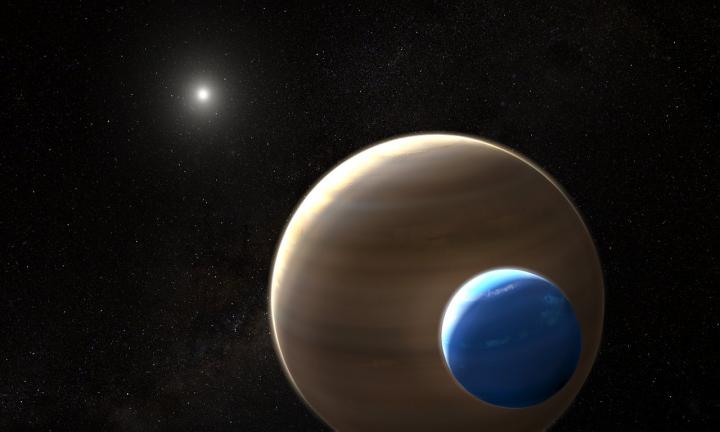Exoplanets have pretty moons too
Nobody really believes that our Solar System is the only one with moons. But the existence of moons in other star systems has only been a hypothesis up until now. So-called exomoons are particularly difficult to find, because they are smaller than their host planets (which is, of course, in their nature) and they follow complicated paths due to their orbits around their planets and, in turn, around their stars. Such objects are usually identified by measuring the occultation caused when they pass in front of their star (transit method).
Nevertheless, the Hubble Space Telescope has now finally found clear evidence for an exomoon. It is located in the Kepler-1625 system, which is at a distance of approximately 4000 light years from the Sun. The central star has approximately the same mass as the Sun but is significantly larger. Currently it is a sub-giant and is slowly making its way toward the red giant phase.
In 2016, a planet was discovered orbiting Kepler-1625. Kepler-1625b has a mass of approximately ten times that of our Jupiter and has about the same size; this would make it a gas giant. The planet orbits its star approximately every 287 days. Thus, its transit in front of its star can be measured about once a year. After evidence was found this past year that the planet might have a moon, Hubble was given the order to take a closer look during its next transit.
The results are now available, and they confirm the conjectures: Kepler-1625b has a moon, which has been named Kepler-1625b I. It would have to have approximately the same size as our Neptune. That’s pretty big for a moon, which is why there is also talk about a double-planet system. Then again, the mass ratio of planet to moon (1.5%) is approximately the same as that of the Earth and its Moon – and therefore clandestinely calls our Moon a “planet.”
Nevertheless, the researchers are still being cautious and only call Kepler-1625b I an exomoon candidate. The Hubble Telescope will have to take another look at the next transit.

